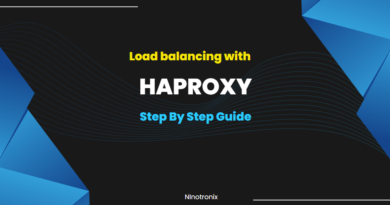Terraform State Management: How to Keep Track of Infrastructure Changes
Terraform is an infrastructure-as-code (IaC) tool that enables users to define and manage their infrastructure as code. When running Terraform, it creates a state file that records the current state of the infrastructure. This state file is crucial to Terraform’s functionality and allows it to track changes made to the infrastructure over time.
However, managing the Terraform state file can be challenging, especially when working in a team environment where multiple people are making changes to the infrastructure. This is where Terraform state management comes in. In this article, we will discuss best practices for Terraform state management and how to keep track of infrastructure changes.
Terraform State Management Best Practices
- Store state remotely: Storing the Terraform state remotely is one of the most important best practices. This ensures that the state file is not lost if the local machine is destroyed or the state file is accidentally deleted. Terraform supports various remote backends like AWS S3, Azure Blob Storage, Google Cloud Storage, and HashiCorp Consul, etc.
- Locking the state file: Terraform uses optimistic locking to manage concurrency issues when multiple people are working on the same infrastructure. Optimistic locking works by trying to acquire a lock on the state file before making any changes. If Terraform cannot acquire the lock, it will wait until the lock is released. Terraform backend providers like AWS S3, Azure Blob Storage, and Google Cloud Storage offer locking functionality.
- Versioning the state file: Versioning the state file is essential to track changes to the infrastructure over time. The versioned state file allows users to roll back to previous versions if any changes cause issues. Additionally, the versioned state file also helps in identifying who made specific changes to the infrastructure.
- Secure the state file: The Terraform state file may contain sensitive information such as passwords, keys, and access credentials. To ensure security, the state file should be encrypted and access should be limited to only authorized personnel.
- Keep state files small: The Terraform state file can quickly become large if the infrastructure contains many resources. Keeping the state file small makes it easier to manage and reduces the time required to apply changes.
Keeping Track of Infrastructure Changes
- Review the Plan Output: Before applying any changes to the infrastructure, review the plan output generated by Terraform. The plan output displays the changes that Terraform will apply to the infrastructure. Reviewing the plan output allows users to identify any issues before applying changes and helps prevent unexpected changes.
- Track Changes with Version Control: Storing the Terraform configuration files in a version control system like Git allows users to track changes to the infrastructure over time. Using Git also allows users to collaborate on infrastructure changes and keep track of who made specific changes.
- Use Change Management Processes: Establishing a change management process is critical when working with infrastructure. The process should include a review process for infrastructure changes, testing the changes in a non-production environment before applying changes to production, and documenting the changes made to the infrastructure.
- Use Infrastructure Validation Frameworks: Infrastructure validation frameworks like Terratest, InSpec, and Serverspec can help validate the infrastructure changes before applying them to production. These frameworks can be used to test the infrastructure in a non-production environment, which helps identify issues before applying the changes to production.
In conclusion, Terraform state management is critical to manage infrastructure changes efficiently. By following best practices for Terraform state management and keeping track of infrastructure changes, users can deploy changes quickly and efficiently while reducing the risk of issues caused by incorrect changes.




